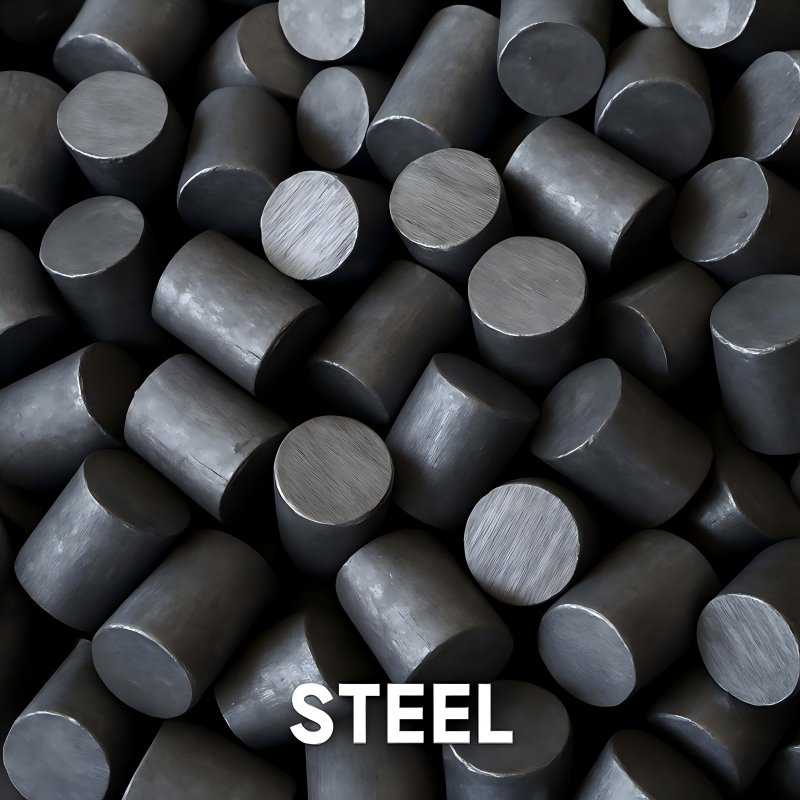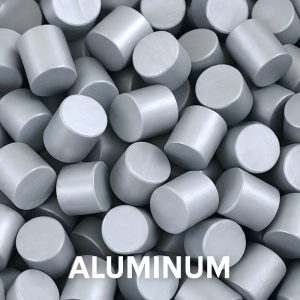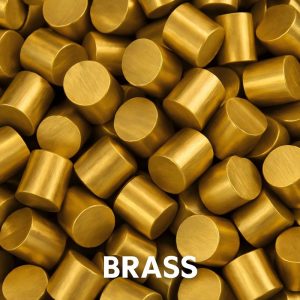Hot forging is a common metal forming method that improves strength, ductility, and structural integrity. Brass, aluminum, and steel are among the many forgeable metals that are notable for their superior mechanical and physical qualities.
Understanding how these materials behave under hot forging conditions is crucial for selecting the right option for a given application.
Understanding Hot Forging
Hot forging is a metal forming process carried out at temperatures above a material’s recrystallization point. At these elevated temperatures, metals become more ductile and less resistant to deformation, making them easier to shape without causing cracks or internal defects.
The primary objectives of hot forging are:
- Enhancing the mechanical strength of the metal
- Improving grain structure and reducing porosity
- Achieving complex shapes that are difficult to form via cold methods
Hot forging typically involves a series of stages including preheating, deformation under high pressure using dies, and post-forging treatments such as trimming and heat treatment.
Key Criteria for Material Selection in Hot Forging
When selecting a metal for hot forging, several performance indicators must be considered:
- Formability at High Temperatures
- Thermal Conductivity
- Mechanical Strength
- Corrosion Resistance
- Machinability Post-Forging
- Tool Wear Impact
Steel in Hot Forging

Steel is widely recognized as a common and highly adaptable material for hot forging applications. It is an alloy composed mainly of iron and carbon, often mixed with elements like manganese, chromium, or molybdenum to enhance specific properties.
| Pros | Cons |
| High tensile strength and toughness | Requires high forging temperatures (1100°C – 1250°C) |
| Good wear resistance | Consumes more energy due to density and heat requirements |
| Cost-effective for high-strength applications | Post-forging machining is often needed |
| Excellent fatigue resistance | Heavier components may limit use in lightweight designs |
Table: Steel Grades Commonly Used in Hot Forging
| Grade | Carbon Content (%) | Common Use | Key Properties |
| AISI 1045 | 0.45 | Shafts, bolts | Good machinability, toughness |
| AISI 4140 | 0.40 | Gears, axles | High strength, fatigue resistant |
| AISI 4340 | 0.40 | Aircraft components | Ultra-high strength, hardenable |
Aluminum in Hot Forging

Many people value aluminum and its alloys for their ability to withstand corrosion and be lightweight. Although less strong than steel, aluminum is increasingly used in hot forging due to advances in alloying and process control.
| Pros | Cons |
| Lightweight (about 1/3 the density of steel) | Lower tensile strength compared to steel |
| Excellent thermal and electrical conductivity | Tendency to gall or stick to forging dies |
| Natural corrosion resistance from oxide layer | Narrow temperature/strain rate window during forging |
| Lower forging temperatures (375°C – 525°C) | May require special lubrication or coatings during forging |
Table: Common Aluminum Alloys for Hot Forging
| Alloy | Main Alloying Elements | Properties | Common Applications |
| 6061 | Mg, Si | Good strength, corrosion resistant | Automotive, aerospace frames |
| 7075 | Zn, Mg, Cu | High strength, fatigue resistance | Aircraft structural parts |
| 2011 | Cu | Excellent machinability | Fasteners, fittings |
Brass in Hot Forging

A copper and zinc alloy, brass is prized for its pliability, beauty, and ability to withstand corrosion. In hot forging, brass stands out for its excellent formability and lower forging temperature requirements.
| Pros | Cons |
| Superior machinability after forging | Lower strength than steel and aluminum |
| Excellent corrosion resistance | Higher material cost due to copper content |
| Low friction and good wear properties | Risk of dezincification in certain environments |
| Moderate forging temperatures (650°C – 875°C) | Not ideal for high-load structural applications |
Table: Brass Types Used in Forging
| Brass Type | Zinc Content (%) | Key Properties | Typical Applications |
| C37700 | 39 | Excellent forging & machining | Valves, fittings, hardware |
| C36000 | 35.5 | Free-machining, corrosion-resistant | Electrical parts, precision items |
| C48500 | 40 | High strength, good ductility | Plumbing components |
Performance Comparison Table
| Property | Steel | Aluminum | Brass |
| Forging Temperature | 1100°C – 1250°C | 375°C – 525°C | 650°C – 875°C |
| Density (g/cm³) | ~7.85 | ~2.7 | ~8.4 |
| Yield Strength (MPa) | 250 – 1600 | 70 – 500 | 100 – 450 |
| Corrosion Resistance | Moderate | High | High |
| Thermal Conductivity | Low | High | Moderate |
| Machinability | Medium | Medium | High |
| Cost (per kg) | Low | Medium | High |
Industry Insights: When to Use What?
Use Steel When:
- Structural integrity and strength are the top priorities
- The component is load-bearing and subject to impact or fatigue
- Cost-efficiency is required in high-strength applications
Use Aluminum When:
- Weight reduction is critical
- Corrosion resistance and conductivity are valued
- Components are used in aerospace, transport, or consumer electronics
Use Brass When:
- Precision machining is needed post-forging
- Appearance and corrosion resistance matter (e.g., plumbing, decorative items)
- Smaller, detailed parts are produced in bulk
Environmental and Economic Considerations
The sustainability and recyclability of each material also play roles in material selection:
- Steel is widely recycled and supports circular economy principles.
- Aluminum requires very little energy to recycle and has a low melting point.
- Brass recycling is common but copper mining and production carry higher environmental burdens.
Energy consumption and die wear during hot forging also vary:
- Steel typically requires robust dies and more energy.
- Aluminum allows for faster cycles but may stick to dies.
- Brass offers less wear and tear on tools, extending die life.
Conclusion
Each metal has its own merits in hot forging. Steel offers unmatched strength, aluminum brings lightweight efficiency, and brass shines in machinability and precision. Your application needs will dictate the right choice.
Choosing between steel aluminum, or brass in hot forging isn’t a one-size-fits-all decision, but it is one that determines cost, performance, and durability for the long term.
